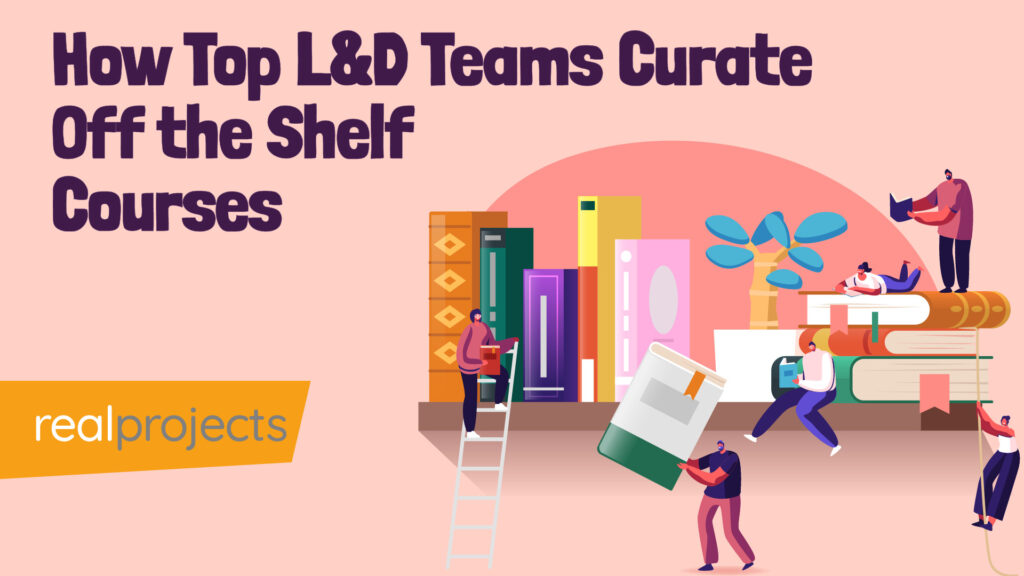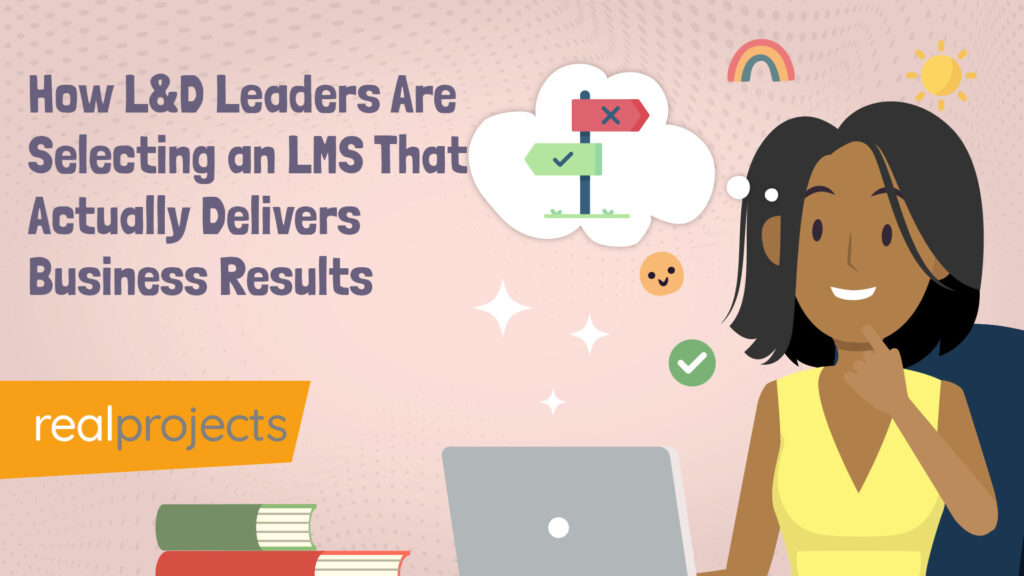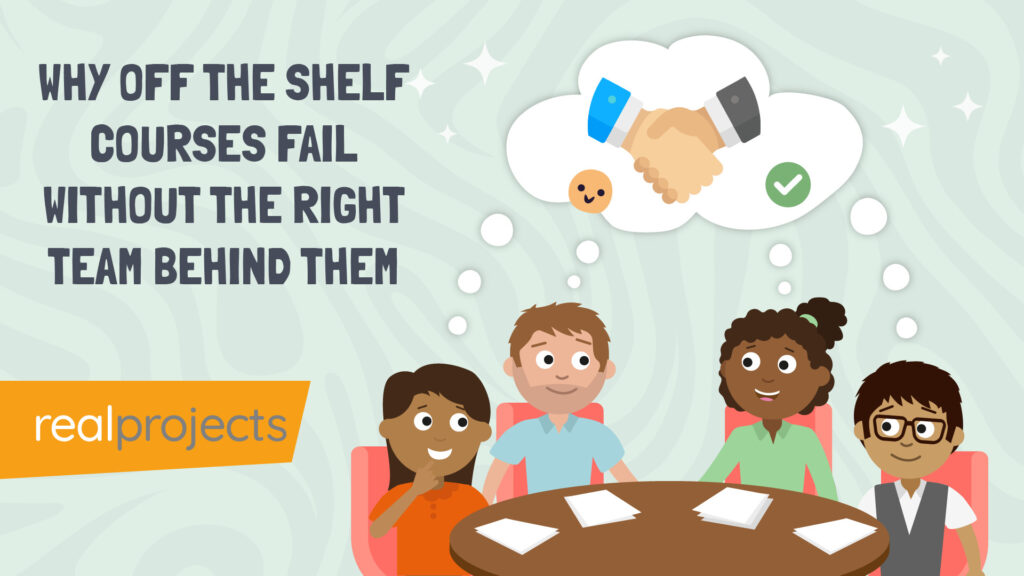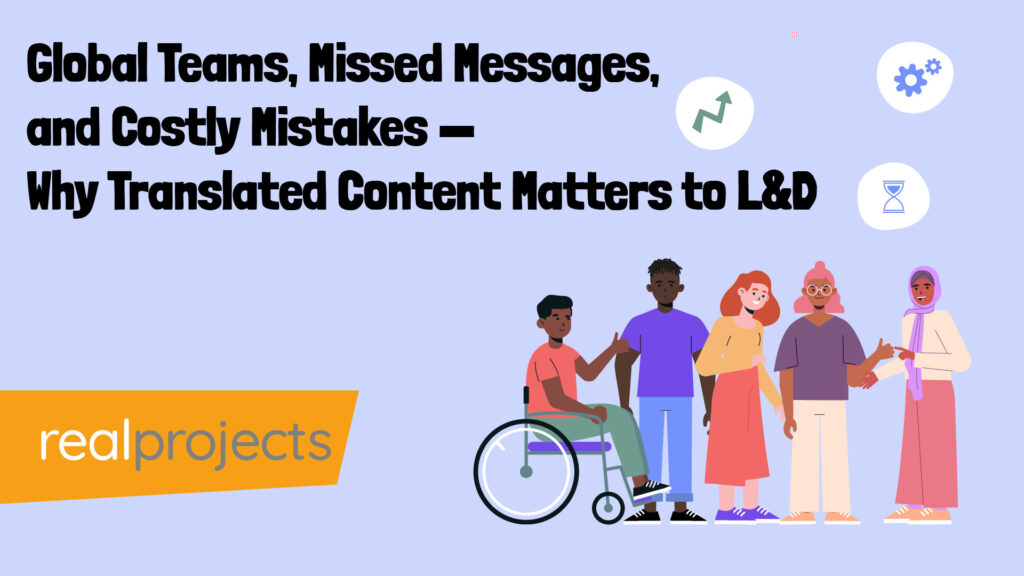Sourcing quality content for your Learning Management System (LMS) or Learning Experience Platform (LXP) doesn’t need to be a problem.
This insight article covers a few steps that will let you maintain a content library that engages your team and aligns with organisational goals.
1. Start with Clear Objectives
It seems obvious, but ensure that you have a clear set of objectives. Don’t make decisions based on exhibition demonstrations, or the latest tech release.
To build a content library that adds value, start with clear objectives.
Define what you’re trying to achieve, whether it’s compliance, upskilling, onboarding, or filling skills gaps.
Linking training goals to business priorities will help you focus on content that directly supports your organisation’s success.
Speak to people within your organisation. CEO, CFO, CIO. Find out what the requirements are.Visit your locations and speak to people. You’ll find out a lot.
Get everything down and agree what the objectives are. Don’t take months to do this. It’ll be out of date by the time you finish. Content and objectives change. You need to be flexible and dynamic.
Your objective ‘document’ needs to be a working document, but if you don’t have something get something down and this can be your starting point.
2. Understand Your Audience’s Needs and Preferences
Effective content needs to be relevant to your organisation.
Don’t buy what you like.
Use surveys, training data, or focus groups to understand which formats your people prefer – be it video, interactive scenarios, or shorter modules. There isn’t a perfect answer but ask, find out what people like. If you’ve bought content before what has been a success.
Aligning content with these preferences can increase engagement and drive completion rates, ensuring that training delivers on its purpose.
3. Balance Off-the-Shelf and Custom Content
Consider a mix of custom and off the shelf content. You might need to get some custom content developed to meet specific needs.
A robust content library typically includes a mix of ready-made and custom content to meet both general and specific training needs:
- Off-the-Shelf Content: This type is ideal for common training areas such as compliance, leadership, cyber security or productivity.
Off the shelf content should be quick to deploy and cost effective. If it’s not, ask why. - Custom Content: For role-specific or company-specific training, custom content helps reflect your organisation’s unique values, processes, and branding.
Custom content doesn’t need to cost six figures and take a year. Also get the right people involved in creating custom content. The first bit of looking at visuals is always exciting – but have you got the right mix of people to see the project through?
You’ll need a plan for both. Don’t burn your budget. Work out what you can afford.
Understand how much both costs.
You’ll cost varying quotes for both custom and library content – start to understand how much learning content costs and how people are pricing it.
Prices vary. Get quotes, but don’t waste people time with quotes for projects that don’t exist.
4. Prioritise Quality and Relevance
High-quality content is accurate, up-to-date, and directly applicable to the workplace and current themes.
Look for content that’s frequently updated, practical, and straightforward.
Ensure it’s compatible with various devices, so your team can access it wherever they are.
A content provider should have a content list. Ask to review it. Need to sign an NDA to have a look at a list? Ask why? You should be able just to have a look at a list.
Review the content list – this takes time, but be smart. Use AI tools to compare the lists.
It is unlikely that a library will have everything that you need, you might need to budget for two.
Do your review and check that the library has what you need. Don’t forget there will be courses not on your list. However people do browse and you’ll need content that you’ve not thought about.
Ask the question again. What do you need in your organisation?
5. Enhance Engagement with Well Designed Content
Engagement drives result and well designed content is important.
It’s not all about interactive elements, simulations and VR.
Ensure that you’ve read the content. Make sure it’s clear, concise and free of jargon. What’s the tone and voice? Does it make sense? A conversational tone is much better for complex concepts and topics.
Is the content well structured? Does the content use headers, bullet points and sub-headings to make it easier to read. Avoid long sentences and huge paragraphs.
What’s the voiceover like? Can you understand it? Does it have a good pace?
What are the graphics like? They should support the script and content. Good visuals will bring everything together – the same for animation, does the animation help tell the story.
Think about the consistency through the content – does it look like the designers have followed a consistent theme?
6. Ensure Accessibility and Inclusivity
Accessible content is essential. Look for providers who follow accessibility standards (such as WCAG compliance) and offer features like closed captions and alternative formats.
Can you actually read the content? Is the text readable? Is the font they correct size for people to read is the contrast suitable?
7. Leverage Data to Inform Decisions
Data is key to understanding the impact of your content. Just as data sharpens decisions in sports, it provides the insights to support your strategic planning.
Look carefully at sport and how they use data. In L&D people there are people dismissing LMS and Course data like completion rates but if you build your own metric feedback you can start to map this to other data like work days, your own strategic projects.
Data is often dismissed because people don’t know how to integrate and analyse the data.
8. Evaluate Vendor Support and Integration Options
There are a range of vendors available, it is important that they understand your integration needs. And, do you know your own requirements?
SCORM or xAPI compatibility, frequent updates, or technical support, reliable vendors make deployment easier and save your team from troubleshooting issues.
Certain vendors also offer consultation services to help you curate content that’s the right fit for your LMS or LXP.
9. Run a Pilot to Test New Content
Consider running a pilot programme with a small group before rolling out new content.
You can then gather feedback on the pilot, gather feedback on relevance, engagement, and usability, and make any necessary adjustments.
A pilot ensures smoother implementation and allows you to make refinements that enhance the overall experience.
10. Commit to Ongoing Improvement
Earlier in the article we discussed that your objective document should be a ‘live’ document.
When you develop a learning library this is something that ideally you want to manage, it’s an ongoing process.
Set up a regular review cycle to evaluate the library and have a check in with your supplier.
Keeping content fresh and aligned with current needs will help maintain its impact and support evolving organisational goals.
Q&A
- How can I make my LMS better?
To improve your LMS, focus on adding relevant, engaging, and accessible content. Make sure the material aligns with organisational objectives, includes interactive elements, and is accessible on all devices. - Is an LXP better than an LMS?
It depends on your goals.An LXP is more focussed on personalised learning experiences and an LMS has a more delivery focus. Vendors from both now offer functionality that makes platforms look increasingly more integrated.
An approach is to consider your requirements and then consider the LMS/LXP options to find the best fit. - How do you create content for an LMS?
At a simple level you can upload most content to your LMS. But, you would want to be more structured than this. Define your learning goals, plan your content and create/purchase content.Creating LMS content involves setting clear goals, choosing the right formats, and ensuring compatibility with the platform.
Custom content may be ideal for specialised roles, while off-the-shelf options can cover broader needs. Quality and relevance are key. - How do you evaluate the effectiveness of an LMS?
You might consider ROI mapped to training costs, improvement in productivity that is mapped to specific project or business units.At a basic level you might consider employee satisfaction – gathering feedback on the content, content quality and feedback on the user experience.Although dismissed effectiveness by tracking engagement metrics, completion rates, and user feedback can be incredibly valuable if you have the correct data analysis model in place.



